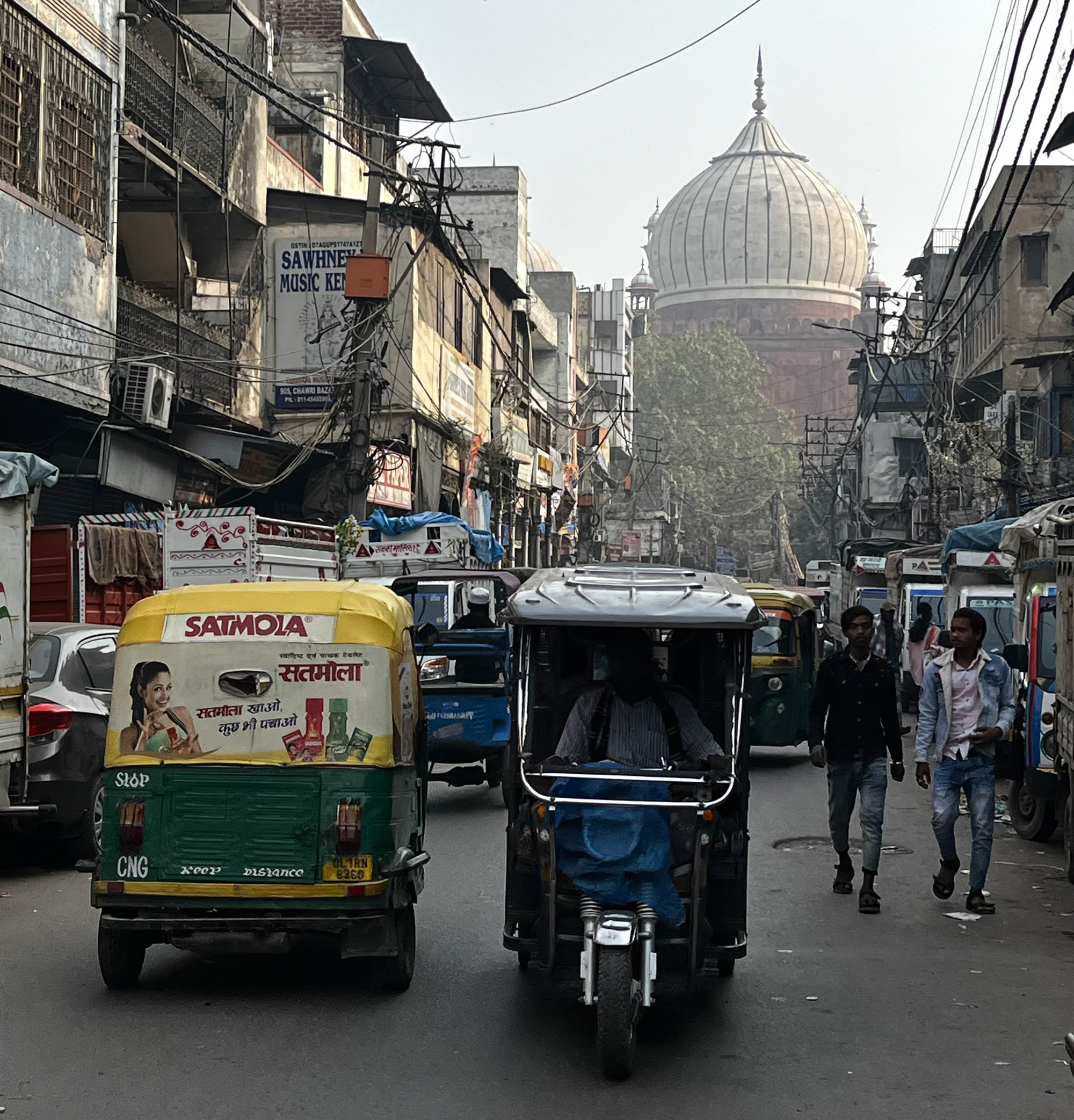In India, women-led heritage walks spotlight Old Delhi’s centuries-old colourful ‘twisted’ history
[ad_1]
On an unusually warm and smoggy December morning, Indian heritage walk organiser Anoushka Jain shepherded a group of 45 people through the chaotic lanes of Chawri Bazaar, introducing them to the historic sites and run-down buildings that have been a fixture of Old Delhi’s cityscape for centuries.
But these sightseers came not just to learn about the buildings, but also the women who once occupied and built those spaces.
Cutting through the piercing sounds of vehicles, Jain familiarised the group with tawaifs and their kothas, or courtesans and their residences, respectively. She said the tawaifs had often been misrepresented, with thousands of years of tradition associated with singing and dancing being reduced to prostitution by British colonisers.

“Our understanding of tawaifs come from Bollywood films, more or less,” the 28-year-old said after the walk, referring to Hindi-language films such as Sardari Begum, Umrao Jaan and Devdas. “We need to deconstruct that, and to break even one of the stereotypes is a big achievement.”
The tawaifs and kothas walk is part of several tours conducted by Enroute Indian History, an all-women heritage organisation Jain founded in 2019. The walks aim to change male-centric narratives by interjecting women’s perspectives into Delhi’s historic spaces.
The Indian capital houses dozens of heritage sites, including forts, monuments and mausoleums dedicated to Mughal dynasty emperors who ruled India from 1526 to 1857. While the names of the male rulers are part of the public consciousness, many powerful and influential women, despite their contributions in history, remain overlooked.
How Indian royals are helping to revive traditional arts and crafts
How Indian royals are helping to revive traditional arts and crafts
Standing in front of a 200-year-old mosque, Jain described the story of Mubarak Begum, a courtesan who married David Ochterlony, Delhi’s first British resident, and built a mosque under her name. She said women of the time often commissioned public service infrastructure to exert influence and gain respect, though people referred to Masjid Mubarak Begum as Rundi ki Masjid, or a “prostitute’s mosque”.
Apart from the tawaifs and kothas walk, which passes through several European-style residences of courtesans – many of them are now dilapidated or turned into private units – Enroute Indian History also makes an effort to highlight historic buildings that were either commissioned or designed by women, Jain said.
The “Badass Begums” series is one such walk. The tour takes visitors to the present day Delhi Town Hall area, which contains a caravansary for travellers built in the mid-1600s by Jahanara Begum, the daughter of Mughal emperor Shah Jahan; the Fakr-ul Masjid, which was commissioned by Kaniz Fatima as a tribute to her husband around 1728 after he died in a war; and the Fatehpuri Mosque, which was built by Fatehpuri Begum, one of emperor Shah Jahan’s wives, in 1650.
“We focus on the architecture built by the women, because women were made to feel silent in history when they wanted to talk,” Jain said. “So women had to be really smart in carving their way in history.”

Sharmita Ray, an associate professor at Delhi University with a research interest in gender history, said it was crucial to “recognise, acknowledge and critically appreciate the presence, role and contributions” of women throughout history”. She added that they were “reflections of women’s agency, their place and role in society”.
“The perception of any given historical context would essentially become more inclusive and gender-sensitive by incorporating women in the re-imaginings of past heritage,” she said.
And that is one reason why Jain, a history graduate, said she founded Enroute Indian History – so that women’s stories from the past could be told by modern-day women, something which she said was largely missing from heritage tours. Jain said she wanted to “create a space for women to promote heritage where they feel their voices are heard”, inspiring and influencing each other.
Enroute Indian History also organises women-only walks and night tours, which Jain said aims to provide a safe space for women to explore Delhi. According to the government’s crime records, the Indian capital ranked among the most unsafe cities for women in 2022.
While there have not been major safety concerns, a lack of proper infrastructure, including car parks that are far from monuments and too few well-lit areas, can pose a challenge, Jain said. She said it was initially difficult to convince her parents and families of her employees to allow them to go on night tours, though they have come around now.
Guneet Kaur, a Delhi-based advertising professional and history enthusiast who took part in the tawaif walk, said such initiatives help like-minded people connect in a safe space, where they can learn and interact without any inhibitions. Referring to the tawaifs, she said she was fascinated by their power and influence, while learning how their representations were “twisted and distorted” to fit society’s idea of an ideal woman.
“You see a lot of prominent women and their role in history, but even if we have studied them and learned in schools, they’re not part of the common language,” Kaur said. “It’s nice people are talking about it in an organised way because if we don’t do it now, we might lose it forever.”

Jain and Enroute Indian History seeks to amplify such conversations and create communities where people can engage with different narratives. And by doing so, Jain said she hopes to make more people aware of women’s role in history and the historic monuments they built which are dotted across Delhi.
“History is important because it [shapes] the present,” she said. “The purpose of telling these stories is to improve how we view women in the society.”
[ad_2]
Source link



 Bonuses for new players
Bonuses for new players